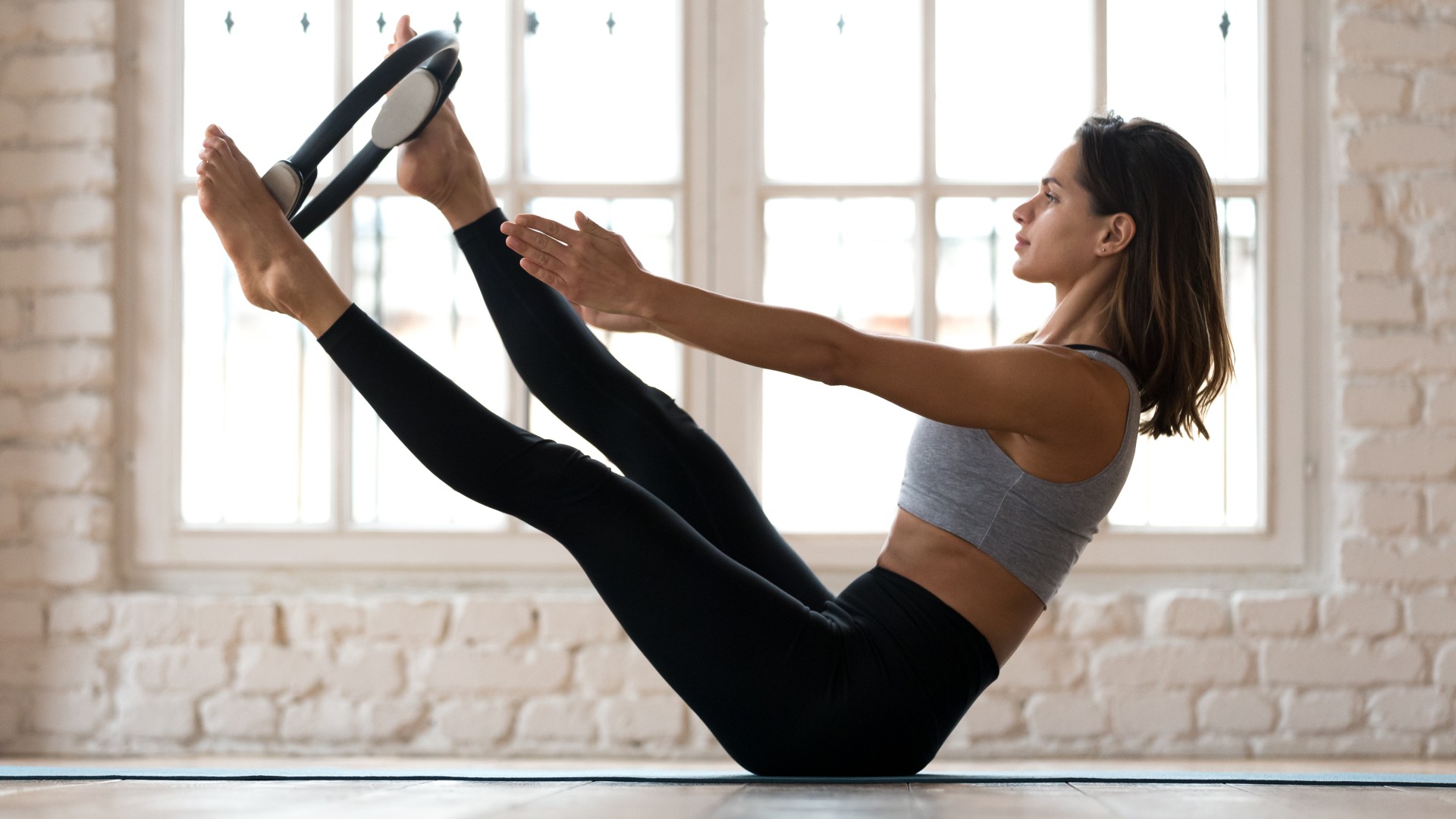
Figuring out how to strengthen your legs without heavy weights can be a chore, as well as finding new leg exercises to keep you challenged, but what if we said you could build strength and torch your leg muscles using a Pilates ring?
The Pilates ring, also known as “the magic circle” or a Pilates wheel, is commonly used in Reformer Pilates and mat Pilates to increase muscular activation and add resistance to the exercise program without using dumbbells or other weights. Learning how to use a Pilates ring during leg workouts could provide a leg day pump that might surprise you.
Best of all, you only need your ring, one of the best yoga mats and yourself to do these three bodyweight leg exercises below. Here’s how to do the moves and a three-move 20-minute leg workout to try from home or wherever you happen to be exercising.
What are the 3 Pilates ring leg exercises?
These 3 Pilates ring leg exercises target the glutes, quads, hamstrings, hip flexors, adductors and core muscles for lower body burnout. Here’s how to do each exercise properly.
1. Pilates ring laying leg press
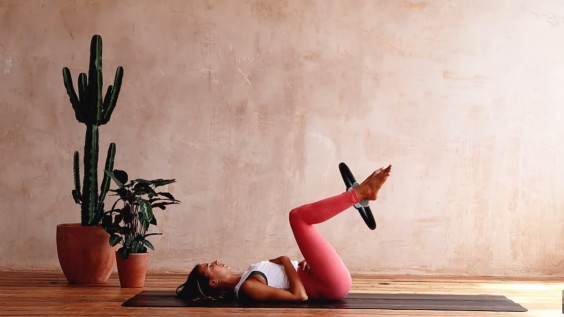
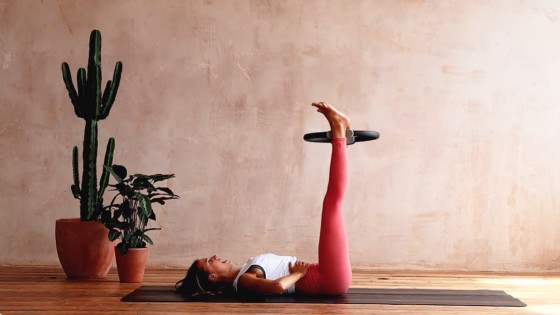
Start on your back with your lower back resting against your mat. Bend your knees to 90 degrees with your legs in the air, and place your Pilates ring between your thighs with the small cushions resting against the inner thighs or just above your ankles. Engage your core muscles, give the ring a healthy squeeze to help activate the legs and then press both feet away from you to straighten your legs. Keep your legs high, pause, then rebend the knees toward your chest.
2. Pilates ring chair pose
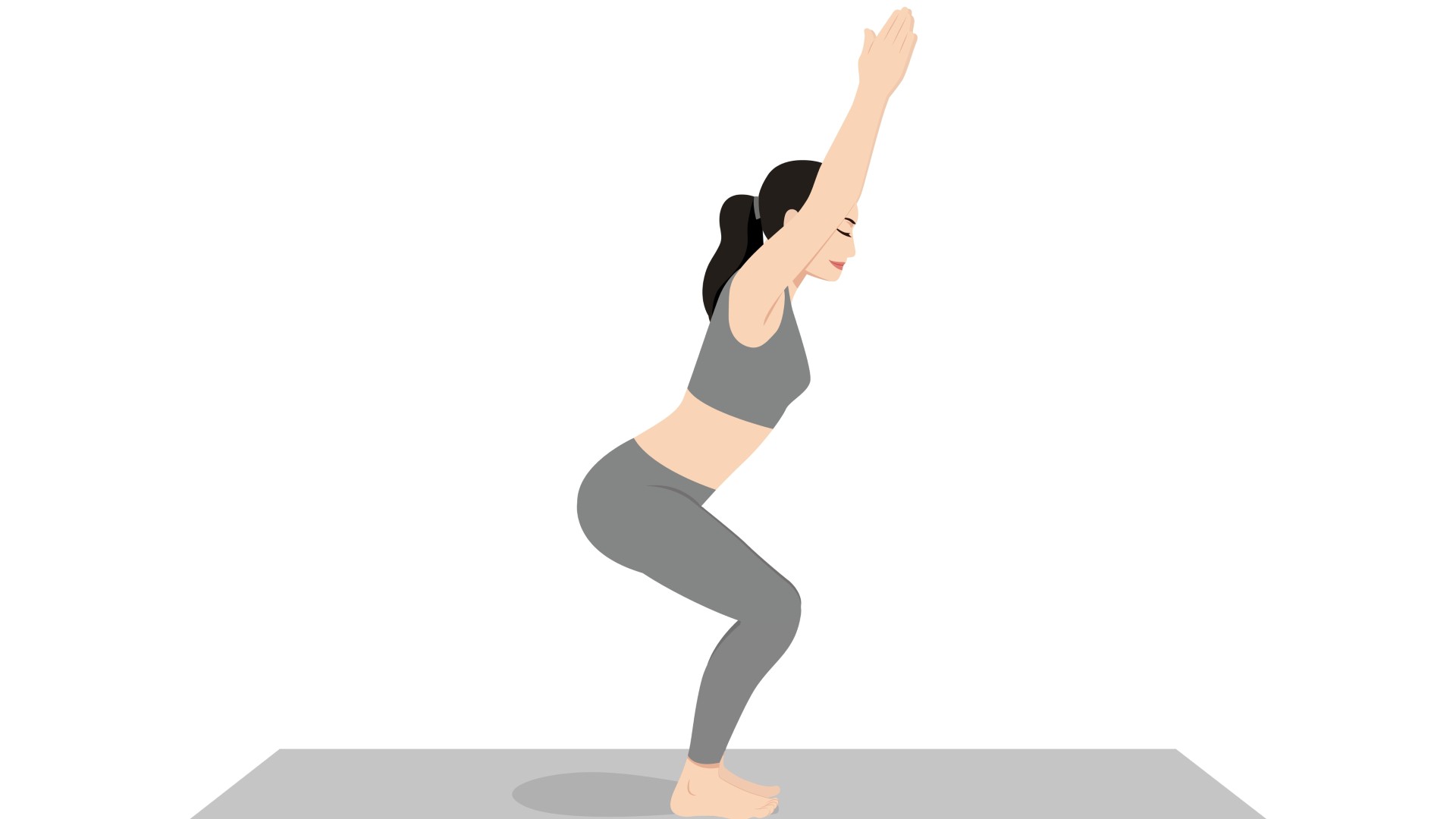
Chair pose is a staple asana used in yoga classes and helps strengthen the joints and muscles of the lower body while developing mobility and core stability. Typically, you’d keep your legs pressed close together during this exercise, but for this move, place your Pilates ring between your thighs with the inner thighs resting against the small cushions.
Engage your core, press gently against the ring, then lower into a squat as if sitting in a chair while raising your arms overhead. Keep your heels pressed down and pelvis tucked under without sticking your bum out, pause at the bottom of the pose, then press through your heels to stand and lower your arms.
Sign up to get the BEST of Tom's Guide direct to your inbox.
Get instant access to breaking news, the hottest reviews, great deals and helpful tips.
3. Pilates ring clamshells
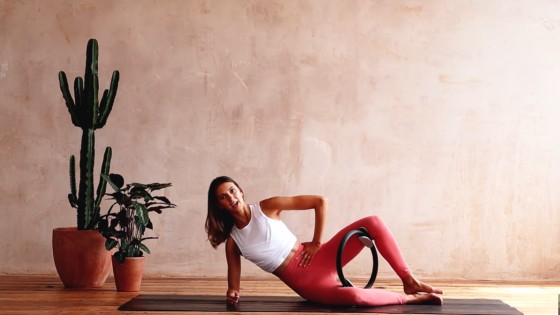
The clamshell is a brutal exercise on the outer glutes, legs, hips and core, and some physical therapists program the move to ease sciatica.
Lay on your right side with your elbow resting on the mat and stacked below your shoulder. Stack your legs and bend your knees, keeping the inner sides of your feet pressed together. Open your knees and place the Pilates ring between your thighs just above the knees, with the cushions gently pressing against them.
Start with your knees open — your right knee on the mat and the left in the air — engage your core, then press against the Pilates ring as though trying to squash it with your left leg. Open your leg again, then continue with your reps. Remember to switch sides. Keep the inner sides of your feet together throughout.
3-move Pilates ring leg workout
Practice each move until you feel comfortable with your form, then try this 3-move Pilates ring lower body workout.
E2MOM (every two minutes) x 10 rounds
Pilates ring laying leg press x 8-12 reps
Pilates ring chair pose x 8-12 reps
Pilates ring clamshells x 8-12 reps per side
Complete 8-12 reps of each exercise within two minutes, then rest for the remainder of that time. Start your next round at the two-minute mark. Continue for 10 rounds, totaling 20 minutes. The reps are guidelines, so remember to scale up or down to suit you, but aim for roughly 20-25 seconds of rest before your next round begins.
Avoid resting between the exercises so that you're achieving 24-36 reps back-to-back before the end of the round. Trust us, by round 10, you'll be glad you don't have heavy dumbbells or kettlebells to contend with.
Why we like the Pilates ring leg exercises
The benefits of Pilates rings are endless. They can help activate and fire up underused muscle groups, add resistance to your exercise regime and increase the challenge and demand on your body.
Moreover, you can use a Pilates ring during ab workouts and arm exercises, strengthening and sculpting upper body muscles. The Pilates ring leg workout above introduces volume training. Without the use of heavy weights, adding volume using high reps and rounds will help you achieve that familiar burn and overload your legs without much equipment. After all, there are many ways to build muscle without lifting heavy weights.
Focus on squeezing the Pilates ring throughout and keeping your spine neutral and core engaged. By that, we mean bracing your stomach as if anticipating impact. A core element of yoga and Pilates is control — moving with purpose, using your breath to drive movement and not rushing. If that means reducing the reps and slowing things down, you might even squeeze more juice out of the workout.
More from Tom's Guide

Sam Hopes is a level 3 qualified trainer, level 2 reiki practitioner and senior fitness writer at Tom's Guide. She is also currently undertaking her Yoga For Athletes training course. Sam has written for various fitness brands and websites over the years and has experience across brands at Future such as Live Science, Fit&Well, Coach, and T3.
Having worked with fitness studios like F45 and Virgin Active, Sam now primarily teaches outdoor bootcamps, bodyweight, calisthenics and kettlebells. She also coaches mobility and stretching-focused classes several times a week and believes that true strength comes from a holistic approach to training your body.
Sam has completed two mixed doubles Hyrox competitions in London and the Netherlands and finished her first doubles attempt in 1:11.
